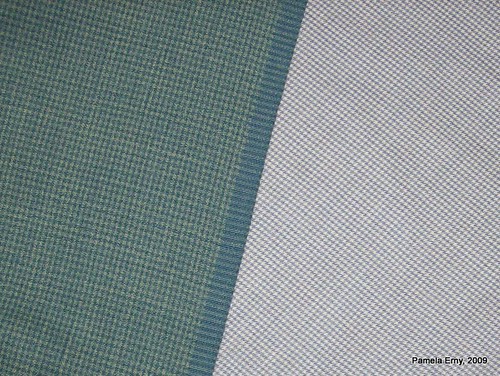~Casual Mens "Distressed" Silk Shirt ~
I love to work with silk when making shirts for men or women. I prefer to use Dupioni Silk...a shiny silk fabric woven with crosswise irregular threads that form uneven "slubs" across the fabric's width. Dupioni silk can be quite hefty in weight or very light-weight. Directly off the bolt, Dupioni silk is too shiny and crisp for my designs. While fine "as is" for garments like prom gowns and wedding dresses, it is much too formal for my purposes. So I wash it in a specific way until it softens and fades.
Oh yes, there can be surprises along the way, but to me that's part of the fun ! The slubs will swell, the color will fade, cross-dyed silk may become a totally new color, and it will definitely shrink. When purchasing silk to distress, I try to buy the 54" wide dupioni, and I buy more than I need. If I need 2 yards, I buy 3. If I need 3 yards, I buy 4.5. Better to have a little more, than not enough...I can always make a scarf ;)
Here are some lengths of Silk Dupioni as they came off the bolt.
^ CLICK to enlarge and see details ^
Each piece is 4.5 yards long. Notice the high sheen of the fabric and how the colors are very saturated.
My distressing process of these silks was to wash and dry each piece separately in a particular order, using different laundry products along the way. Here is how I "distressed" the silk pictured above, based on their unwashed lengths of 4.5 yards.
1. Wash the fabric on a regular cycle in HOT water this way--Place a length of dupioni into the washer, along with a scant tablespoon of a special textile detergent called
Synthrapol . Synthrapol cleans the fabric very thoroughly, suspending any "free" dye in the water so it goes down the drain and does not
settle back onto the fabric.
2. Place the washed fabric into an empty clothes dryer set on HOT, until thoroughly dry. (Note--this is the ONLY time during this process that you will dry the silk on the HOT dryer setting)
3. Look at your fabric in good light. If it has the "hand", drape, and color that you like, it is time for step 4.
If you want a more faded look, repeat the washing directions in step 1 & 2...however this time wash in HOT water, BUT DRY on LOW.
Keep washing (hot)/drying (low) until your silk looks the way you want it to...this is not exact science :) As a frame of reference, I rarely choose to "Hot wash/dry Low" (after Step 1) more than 4 times.
4. Shampoo and condition your silk. Yes, really! Use a good quality shampoo and conditioner, because after washing as described above your silk will look nice, but it might be scratchy if you have put it through more than 2 of the wash/dry cycles. I like to use the products pictured below, because I can usually find them on sale. This last time, Wash your silk on the DELICATE cycle in COLD water with a teaspoon of shampoo. Dissolve a Tablespoon of conditioner in some water, and add it to the COLD water of the final rinse cycle.
^ CLICK to enlarge and see details ^
This is what my silk lengths looked like after 1 cycle of "Step 1" and 2 cycles of "Hot wash/ dry Low --
^ CLICK to enlarge and see details ^
The colors had changed and/or faded, the slubby grain was raised, and the silk was less shiny. It shrank between 18" to 27" in length and 2" to 4" in width (each piece was a little different).
But I wanted to roughen it up even more. So I put it through 2 more cycles of "Hot wash/ dry Low" (for a total of 4 wash/dry cycles after step 1). After "shampooing" as described in Step 4, this is what my beautifully distressed silk dupioni looks like...soft, supple, and ready for the needle !

^ CLICK to enlarge and see details ^
These silk pieces did not shrink any more after the first 2 wash cycles or after their "shampoo". When sewing with distressed silk dupioni, you can cut it on the cross-grain like I prefer (so the slubby grain-line runs lengthwise on the finished garment). When possible, use french or felled seams to discourage "seam slippage".
Wash the finished garment by hand, or on a very delicate machine cycle using shampoo in cold water. I usually dry distressed silk garments in the dryer on a very low/delicate setting until just slightly damp, and then hang until completely dry. Distressed silk dupioni is surprisingly strong, and can take the heat and steam of an iron set to wool to high wool.
Other Sewing Notes-- Use regular sewing thread (silk thread is not necessary). Use the best quality interfacing on your silk-- Pro-Sheer Elegance Fusible Interfacing for the softest, most supple results on light to medium weight silks you plan to use for blouses or dresses, or
Pro-Weft Fusible Interfacing for the best flexible stability on medium weight silks that you plan to use to for jackets, etc. Labels: Distressed Fabric, More Sewing Tutorials
 That's it! Your wool yardage is now ready for the needle.
That's it! Your wool yardage is now ready for the needle.



























